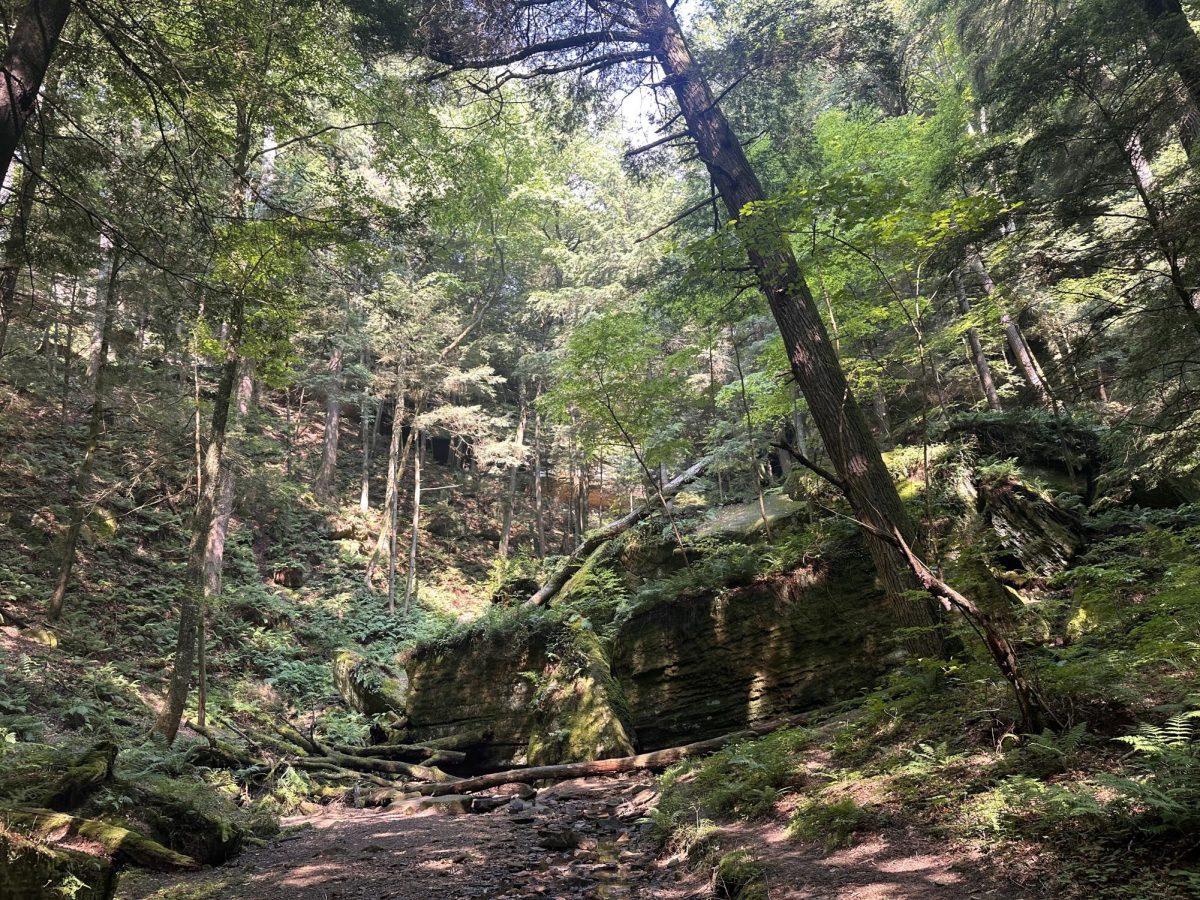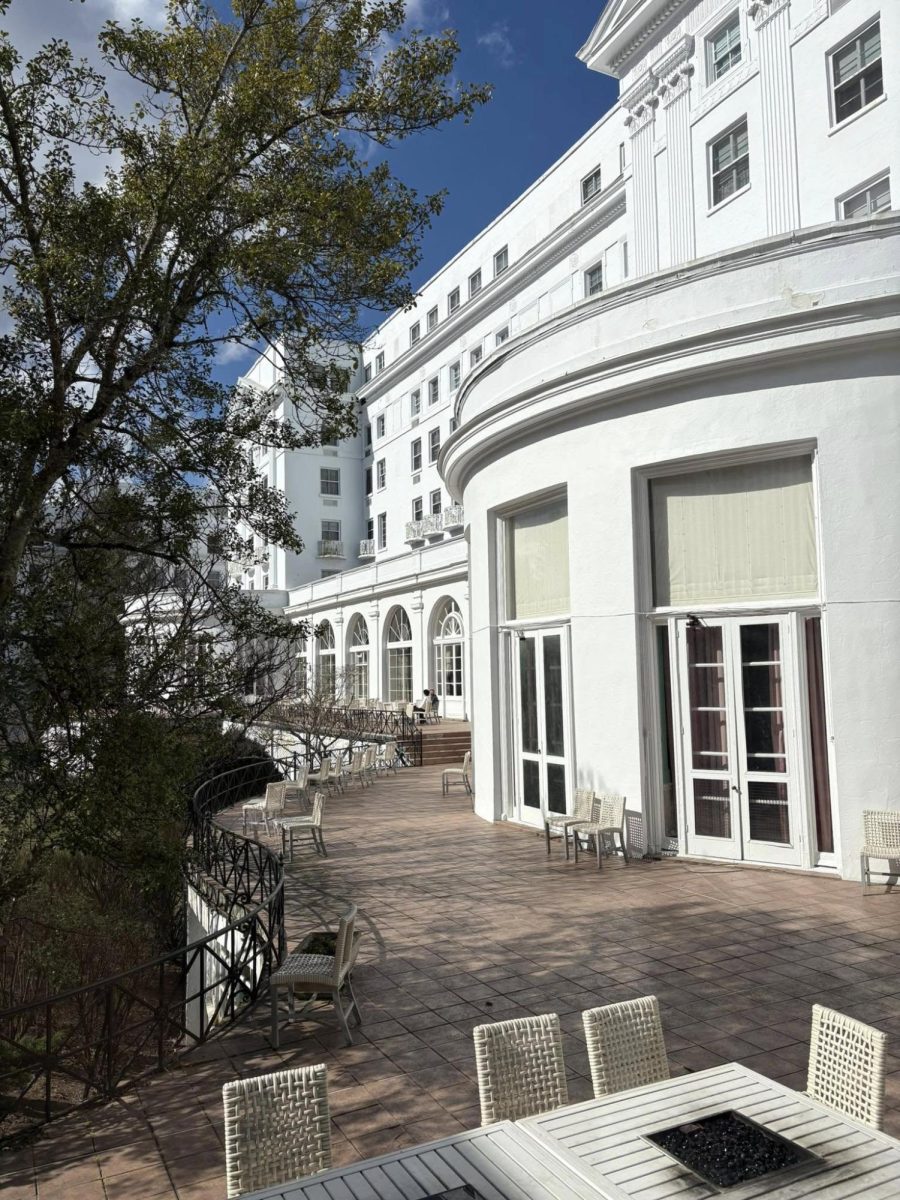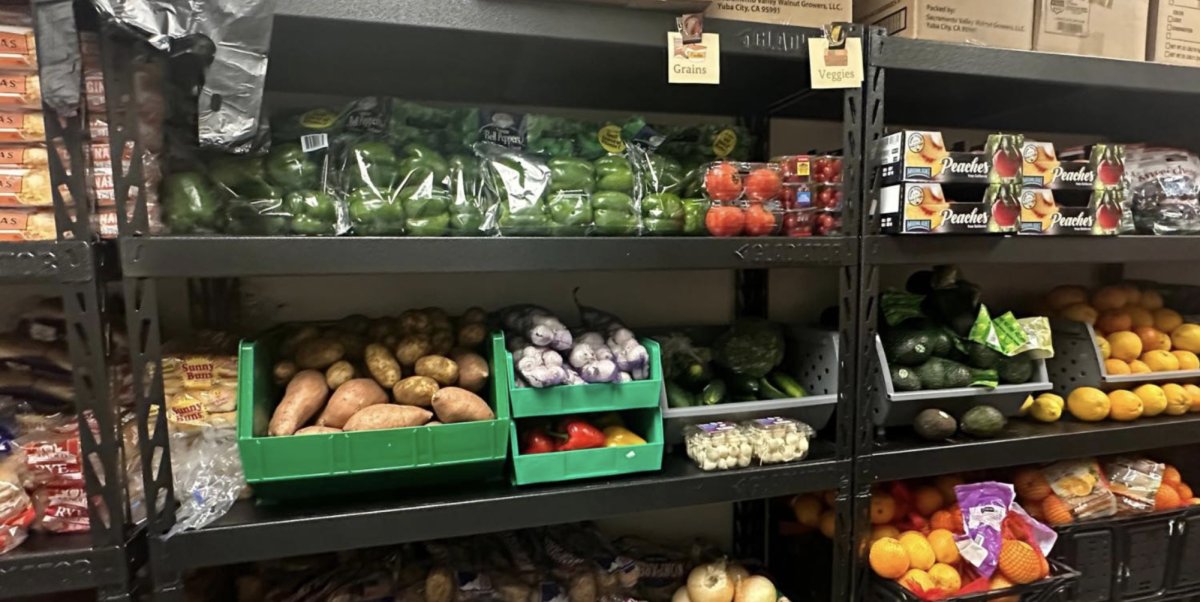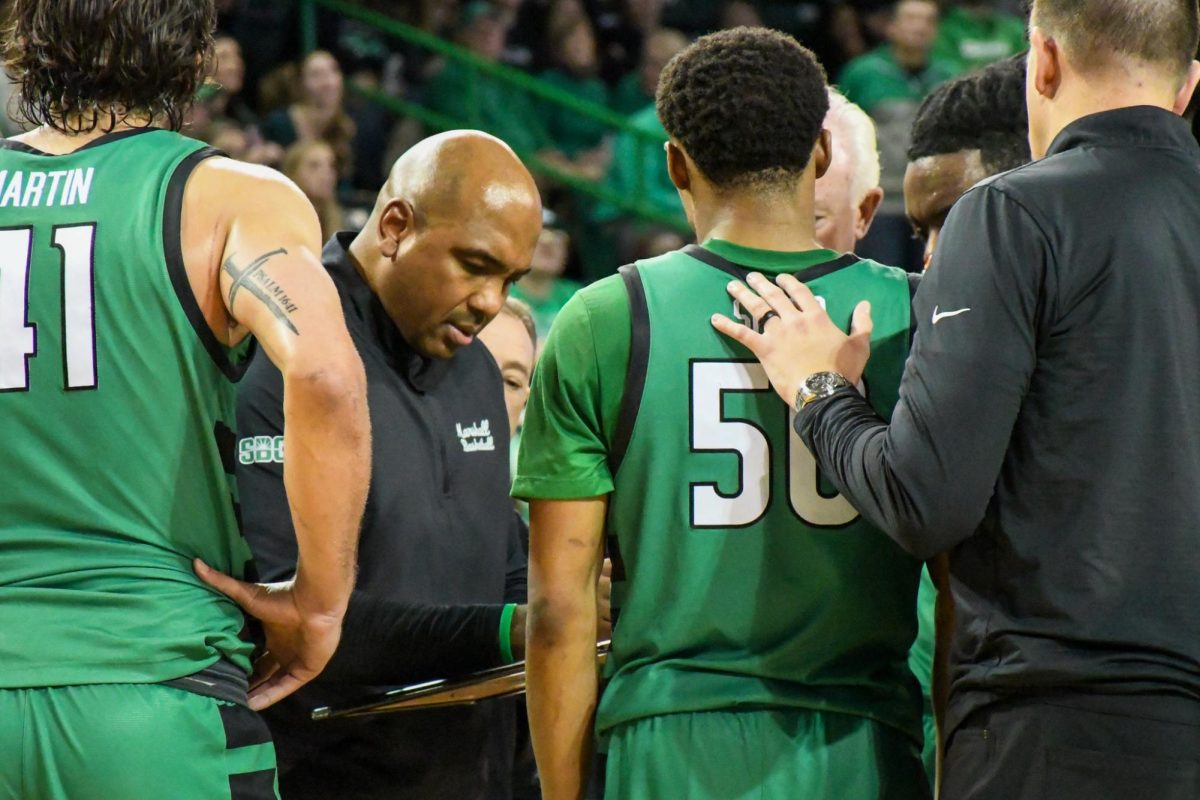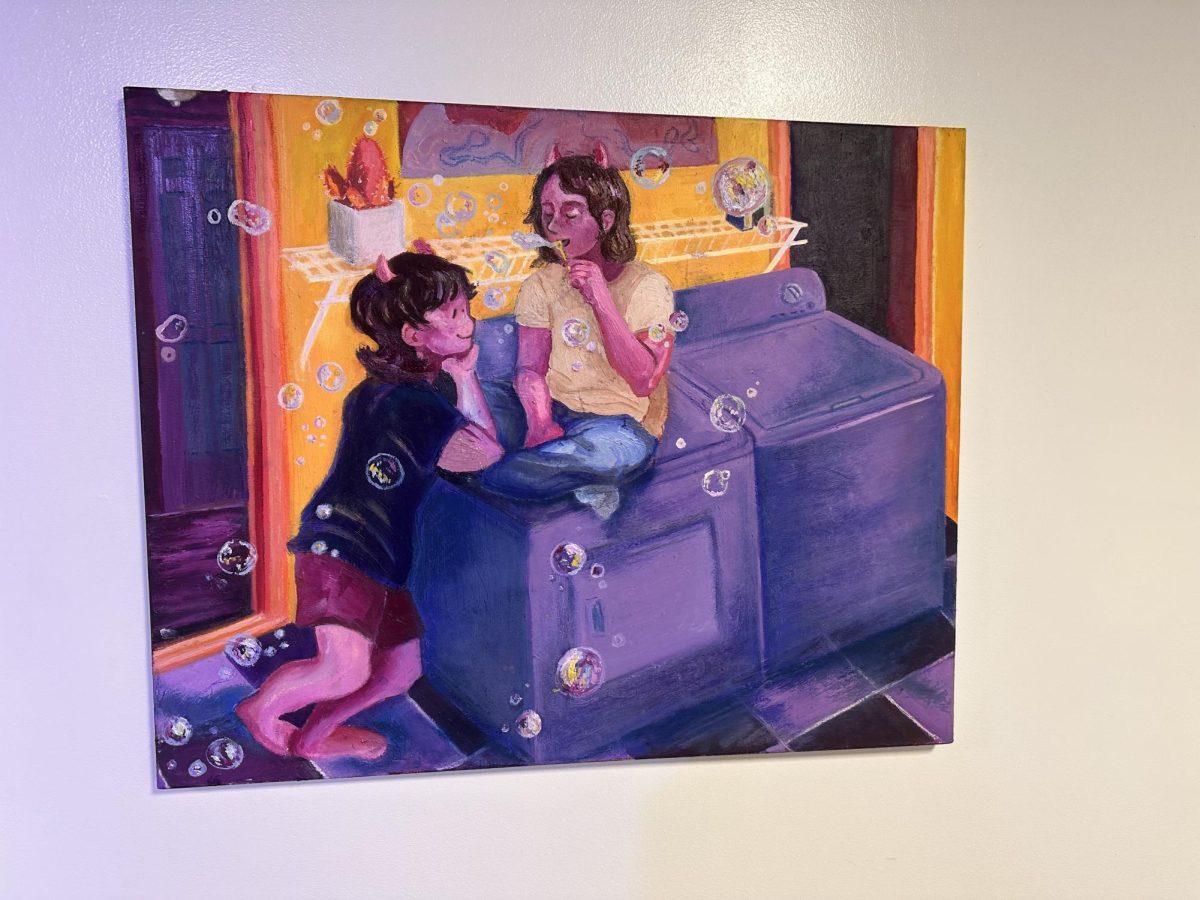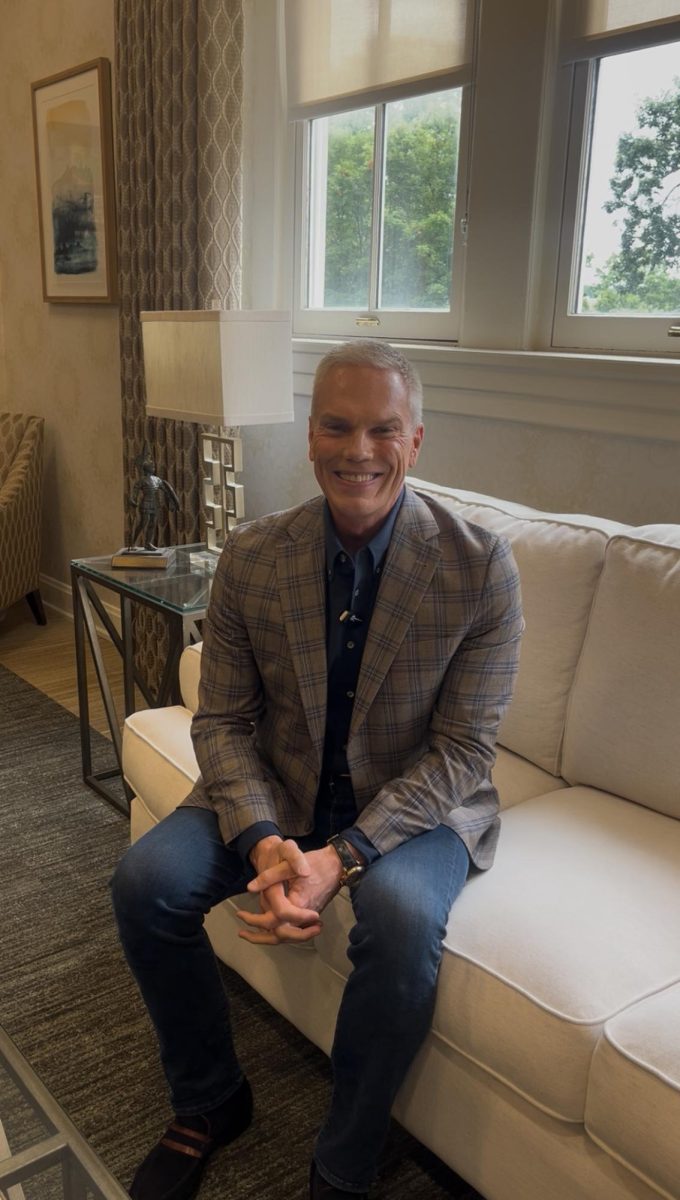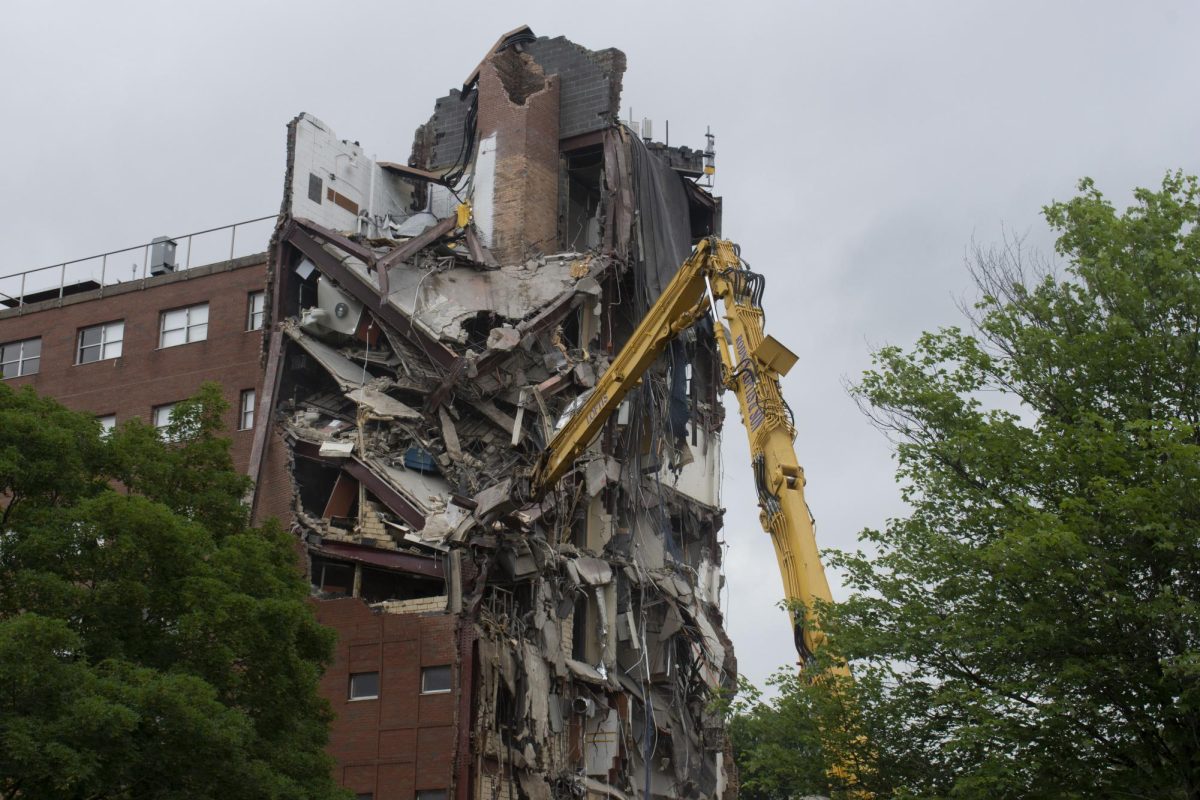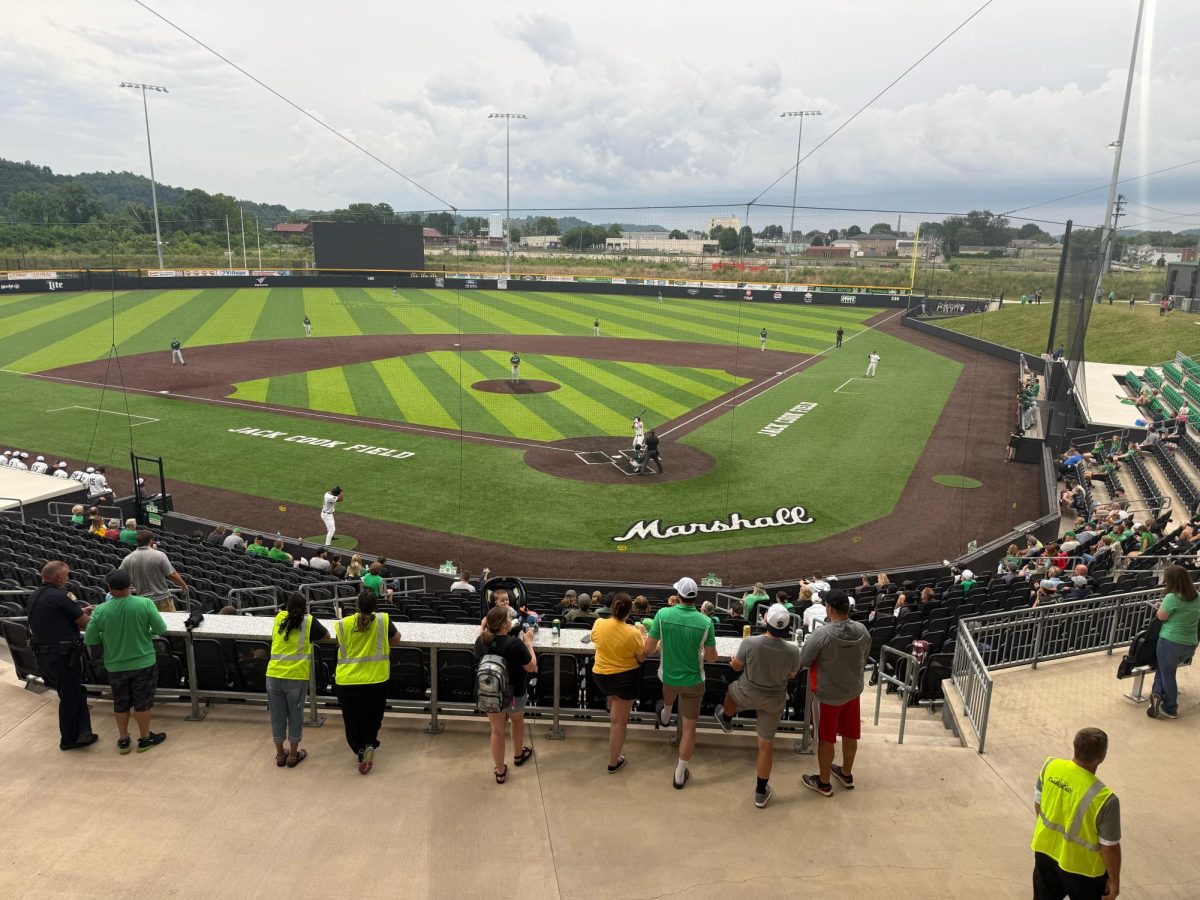School of Art and Design Hosts Closing Receptions for Exhibitions “Heirloom” and “Bloody Soil”
September 20, 2022
Artists Linda Smith and Ahmed Ozsever visited Marshall University to discuss their exhibitions “Bloody Soil” and “Heirloom.” The shows were separate but still linked by the artists’ communication of human interaction with the world.
Around 40 faculty members and students of the school of art and design filled the Birke Art Gallery on Sept. 14, Wednesday evening, to hear Smith discuss her photographic and textile exhibition.
Smith’s exhibition “Bloody Soil” was motivated by the stories of others and their experiences during the 1994 genocide in Rwanda. After spending time teaching at the University of Rwanda, the country and its people inspired Smith by how they mourn the lives lost in 1994 every April.
“I wanted this show to communicate that we have the ability to empathize with individuals, and we have the ability to empathize with those that have gone through a trauma or loss,” Smith said.
Building off this idea, Smith included photographs of national battlefields from the United States Civil War in her exhibition to further communicate the idea that even the land around people holds the trauma of the past.
Meanwhile, the Charles W. and Norma C. Carroll Gallery hosted the second exhibition, “Heirloom,” displaying the work of seven artists. One of the seven artists, Ahmed Ozsever, discussed his work on Thursday evening.
Ozsever’s work in “Heirloom” focused on how different materials can act as markers of environmental change.
“I want people to think about time and their place in it, and I want people to think about their place in the lands around us,” Ozsever said.
One piece in the exhibition titled “Shallow Cores” showcases simulated geological core samples taken around Indiana, as well as photographs of the areas from which they were taken.
Oszever visited the same locations and constructed his core samples out of any traces of human presence—mainly detritus and garbage conveying the human impact on the environment and indexing the past.


